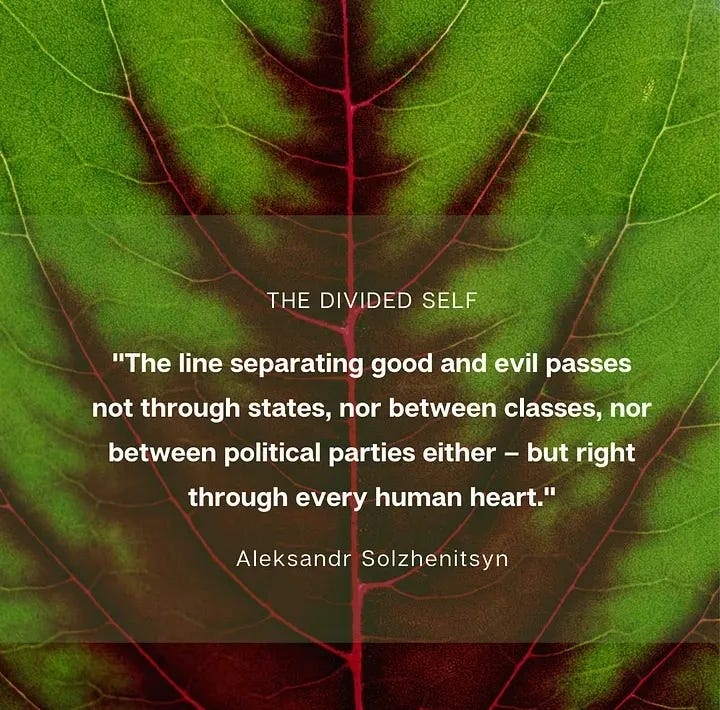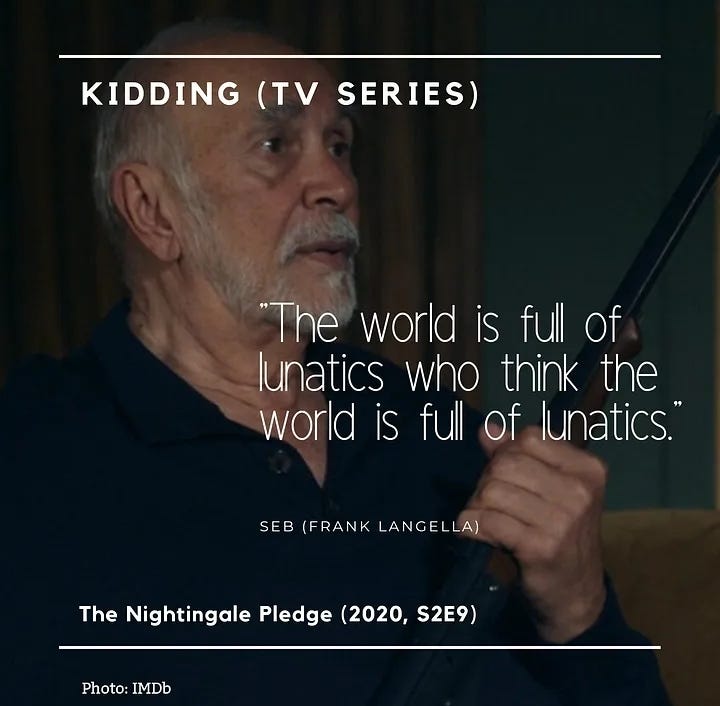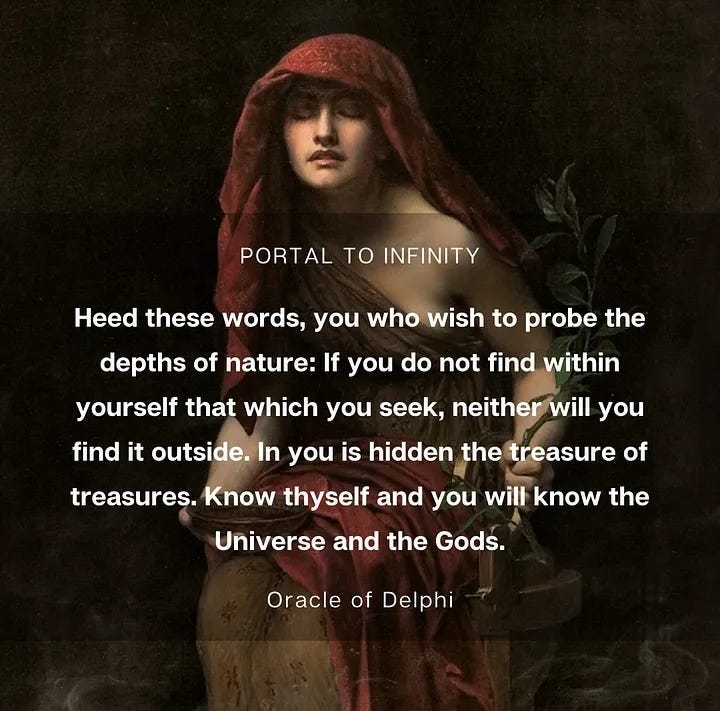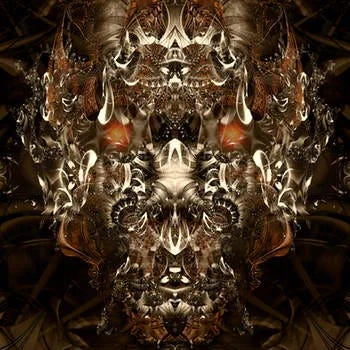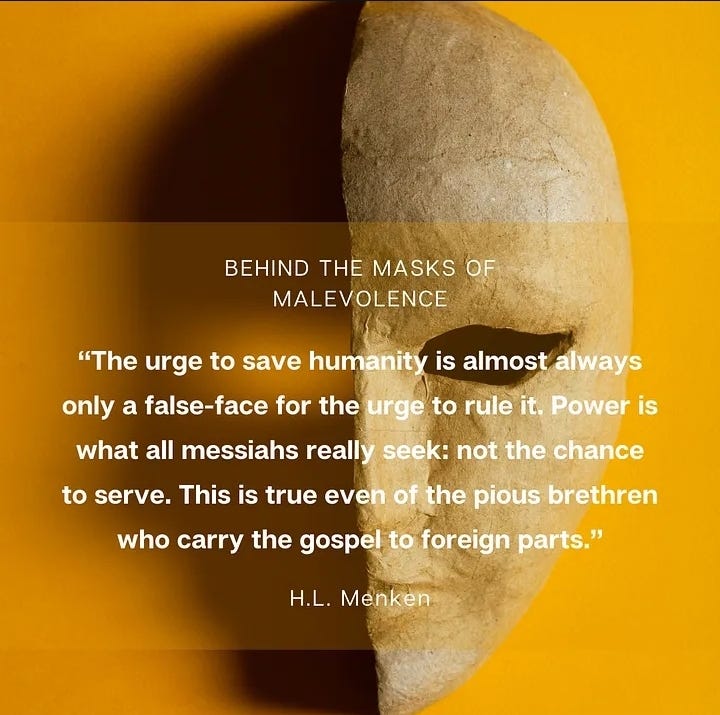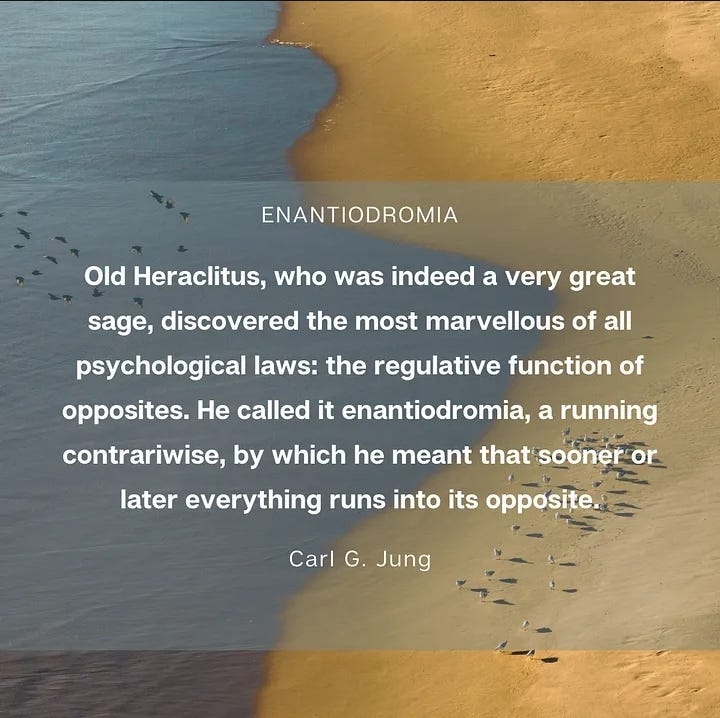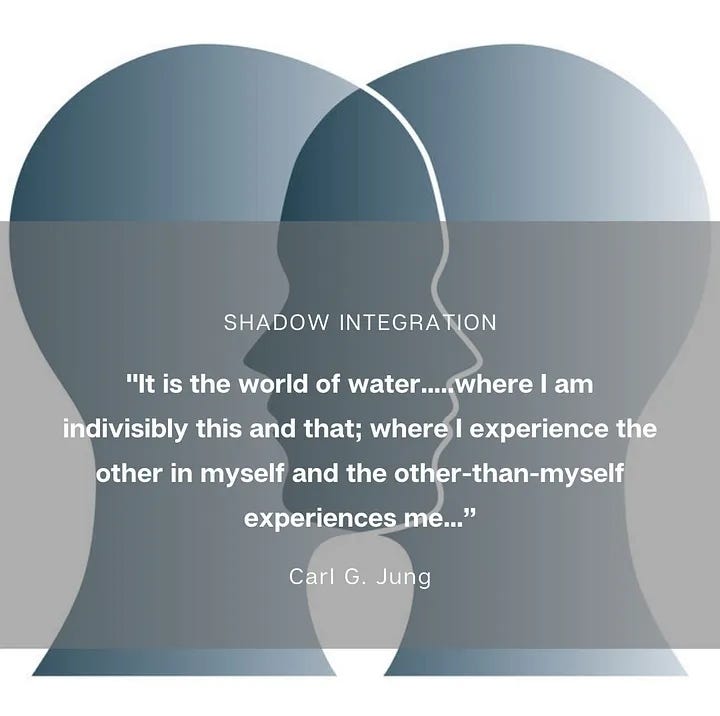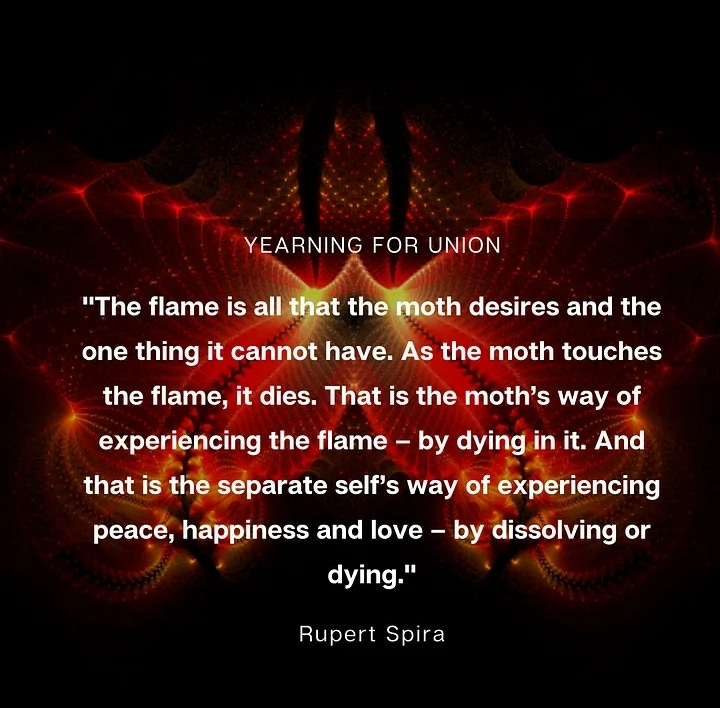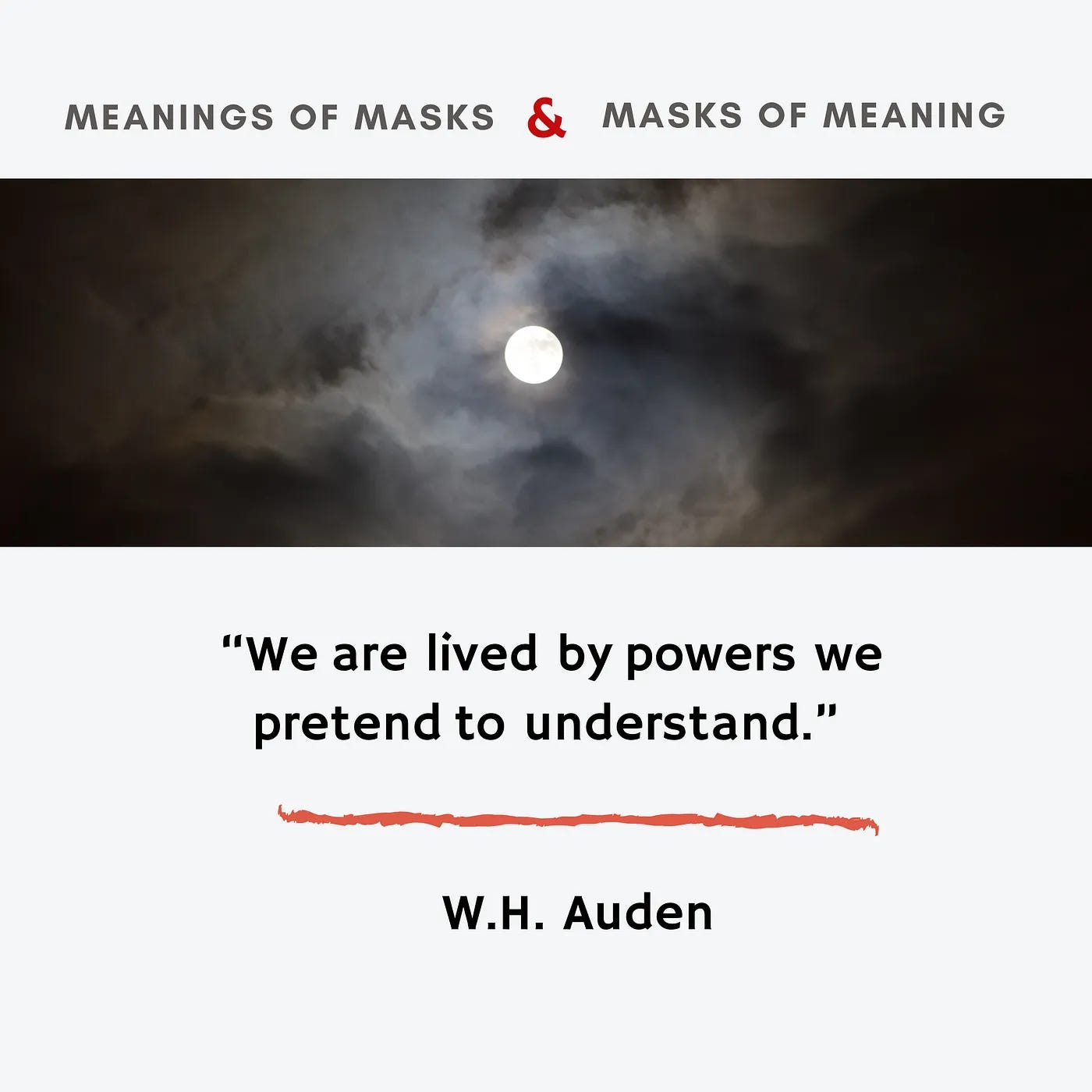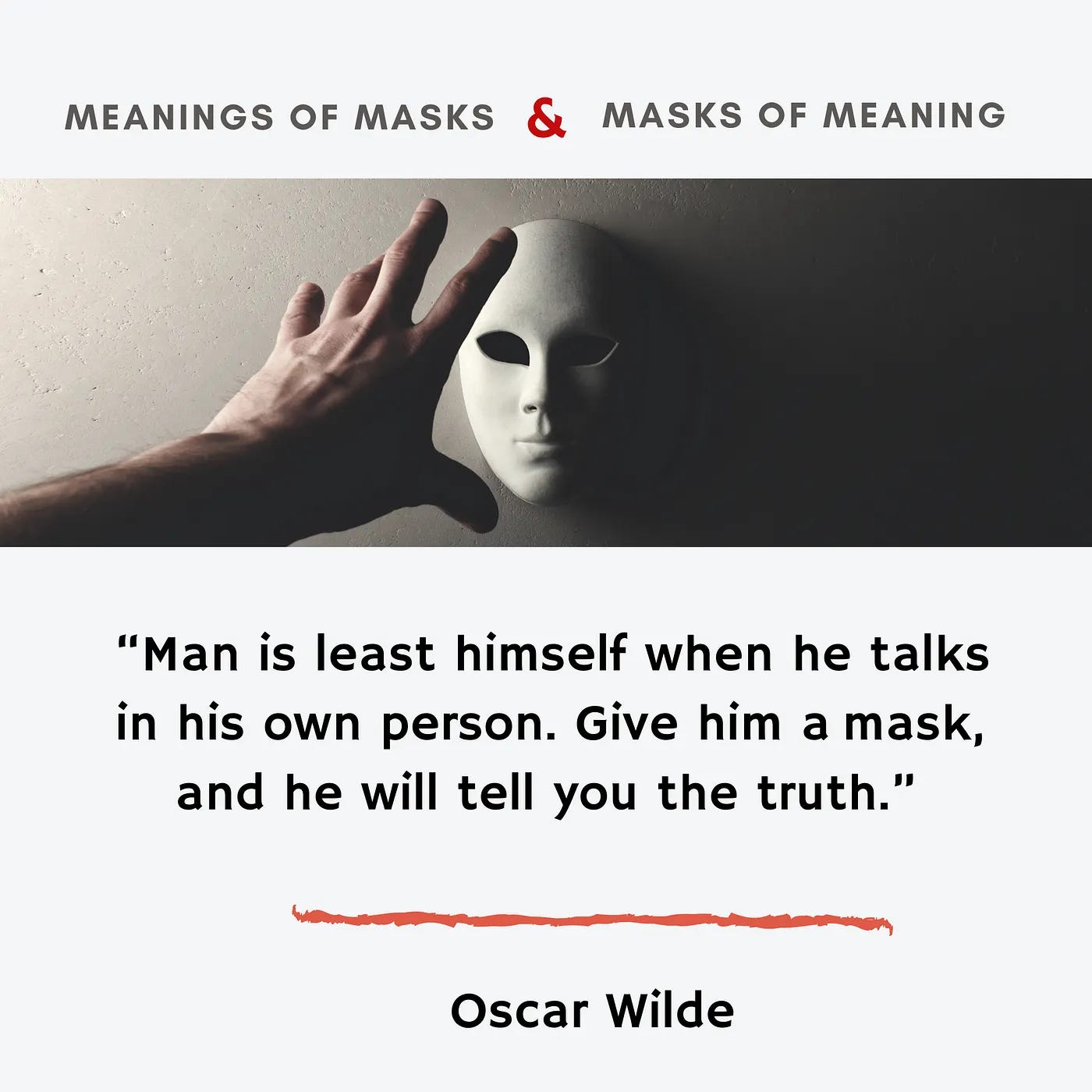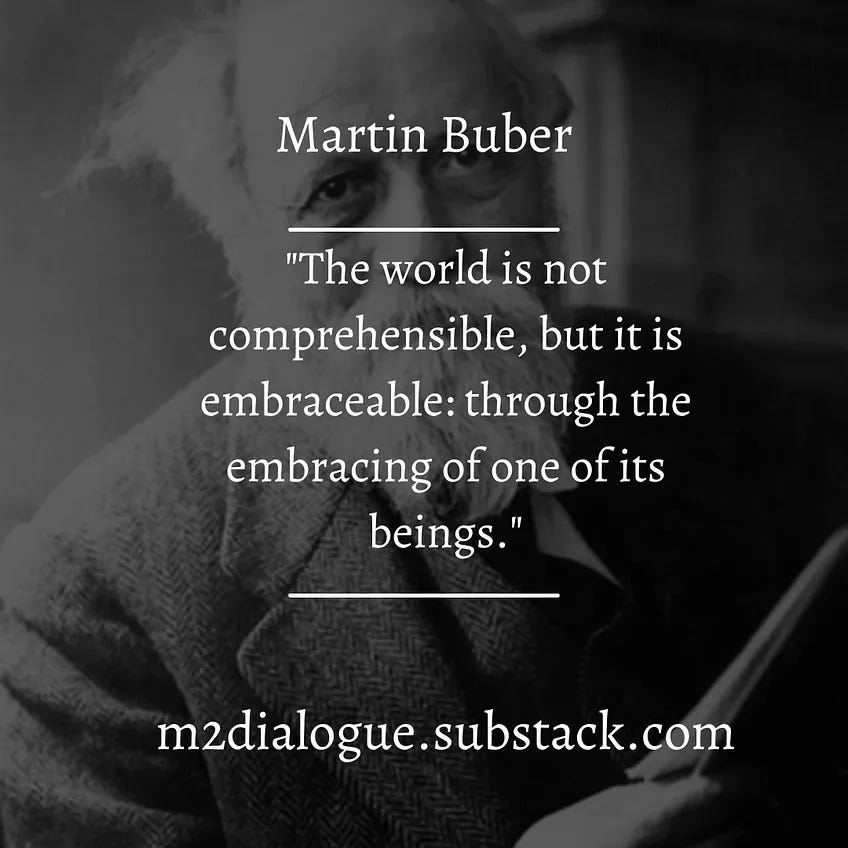A couple of years ago, in response to one of my jeremiads about the pandemic of normalized madness, a friend shared with me a single sentence that made my point. The laconic formulation came from the ninth episode of the second season of Kidding, the SHOWTIME series. This post is a free association with that single sentence.
Lunatics vs. Lunatics
Following a scene that ends with the question “What would grandpa do?”, we see grandpa (Seb / Frank Langella) clutching a rifle and calmly reassuring his son (Jeffrey / Jim Carrey): “I won’t let anything happen to you.” Seb explains that he is determined to protect Jeffrey because:
The world is full of lunatics who think the world is full of lunatics.
This aphorism captured both the state of human sanity — poor — and the inescapable path to healing — self-knowledge. Carl Jung’s elaboration of this ancient prescription still resounds prophetically. We must dare to know our Shadow, all the aspects of our selves that we regard with shame and fear. Otherwise, we project our Shadow into the outer world, starting with our relationships and across our media. This projection ripples through our world and, if unchecked, leads to its destruction.
As Jung wrote in Visions: Notes on a Seminar Given in 1930–1934:
Modern people have forgotten what man really is, so we have people like Nietzsche and Freud and Adler who tell us what we are, quite mercilessly. We have to discover our Shadow. Otherwise, we are driven to a world war in order to discover what beasts we are.
Drawn to the Flame of Self-Knowledge
Jung’s description of world wars as symptoms of shadow projection accords with my reading of the world in 2024. We turn to war to “discover what beasts we are” because we’re terrified to make this discovery through self-inquiry. Instead, we embrace globe-spanning tribalist conflict as our path to becoming ourselves.
With or without violence, we move toward this horizon like a moth drawn to a flame. Consciously or subconsciously, we carry the memory of the ancestral promise that the knowledge of self opens a portal to the knowledge of the universe and all its gods.
Unable to imagine a higher calling, we orient our Hero’s Journey to this pre-determined end. Entranced by a destination we can’t even define, we assert our control over the choice of means: violent vs. nonviolent. However, in the quest for identity, violence is our default preference.
Even when we resort to violence — whether physical, economic or psychological — we still refuse to know ourselves, even by our own deeds. Like schoolyard bullies, we glide effortlessly from deed to denial. Even as this pattern becomes self-evident, we remain rutted in self-defeating cycles of violence and denial. Tomorrow and tomorrow and tomorrow.
In the past, we hoped to be forgiven for such blindness by messiahs who atoned for our sins. They knew that we know not what we do, and they spared us the sublime pain of awakening to this reality. They atoned for our second-order ignorance (SOI).
Seeing Through Subversions
Today, we no longer seek forgiveness or atonement. Instead, we anoint false messiahs who celebrate and exploit our ignorance. Instead of forgiveness, we seek justification, which we receive in exchange for enabling fractal falsehood. Once it gains enough power with our help, the lie removes the mask of messianic hope and embraces open tyranny.
Here, some readers will nod in agreement and point to a specific instantiation of falsehood inaugurated at a specific point in time. The enablers of that specific falsehood may point with equal enthusiasm to other legitimations of falsehood, excluding the one they choose to deny. This clash of shadow projections reinforces subconscious agendas.
False messiahs orchestrate our denial of the banality of falsehood in the culture we co-create and consecrate, and we circle the drain that pulls us into a future we shudder to imagine. We shudder because, deep down, we know that we are living not only through a subversion of our journey to the promised land, but also through its inversion. Unable to integrate our shadow, we turn the dial of our orienting myths by 180 degrees.
In this way, we deplete our energy by investing it in the tyrant’s quest for power. Whether or not we consciously consented to this sabotage, we are stuck in this downward spiral. This sabotage works not only because we project our shadow, but also because we disown our light. Just as we associate our falsehoods with designated “others”, we invest our yearning for enlightenment in messiahs, gurus, leaders, experts, religions, ideologies and abstractions.
In this way, we deny our complicity in the ruin of our world, and we outsource the labor of our redemption. We can’t dissolve this denial unless we learn to look behind the masks of malevolence, not only in others but also in ourselves.
H.L. Menken wrote:
The urge to save humanity is almost always only a false-face for the urge to rule it. Power is what all messiahs really seek: not the chance to serve.
Normalizing the Radical Frontier
Shadow and light represent only one of countless dualities Jung invites us to transcend. He proposes something far more radical than to pair the knowledge of our inner monster with the knowledge of our inner messiah. Like a cartographer trudging through a terra incognita, he charts a course to healing from all false duality. Rather than just treat the symptoms of a corrupted source code permeating a pathogenic culture, Jung stands on the shoulders of giants who dared to imagine treating the code itself.
This lineage of radical thinkers understood the source code of the problem of mutually validated lunacy. That may well be the reason these thinkers don’t often appear on lists of trending topics in “social media”. I don’t think we marginalize these thinkers because their radical message clashes with the more temperate sensibilities of our culture. In fact, individually and collectively, we are living through a rapidly accelerating increase in our comfort with the radical frontier.
Exponential change radicalizes our habits of thought and forms of relating. What’s more radicalizing than the pandemic of alienation deadening the relational bonds of human communities? What’s more radicalizing than an atomized society bereft of trust? How about a culture that destroys meaning?
If we continue to invest our hope in the transformative potential of tepid ideas, we are helpless in the impossible battle of Self vs. Self. Under the tyranny of falsehood, we can only be realistic if we demand the impossible and learn to love what we cannot tolerate. Amor fati.
Instead of this impossible love, we follow our default settings. We gladly “pay any price, bear any burden, meet any hardship, support any friend and oppose any foe” to turn away from the horizon of self-knowledge. With all due respect to the intuitions of our ancestors, we run the other way.
It’s not that we lack courage, although we often do, and we certainly don’t lack information, but the fractal monster commandeers our strengths and resources and presses them into the service of the unholy. So, please, at least in our interactions, let’s normalize the radical frontier.
Minding Our Metaphors
Solzhenitsyn wrote about the line bisecting every human heart, separating good from evil. But well-crafted metaphors, including this one, only move us closer to truth by unmooring from any empirical coordinate system. Metaphors may pack a rhetorical punch, and they may produce moments of aesthetic arrest, but in the final analysis, metaphors translate into matter.
Whether we take the red pill, enter or leave the cave, consume the body of Christ or cleanse our chakras, we don’t want to just bloviate about the meanings of metaphors. If we bloviate, it’s because we remain a self divided against itself. In this confrontation, no one wins, and no metaphor can soothe the pain of self-alienation.
Still, Solzhenitsyn’s statement about the ineffable schism of the psyche evokes an essential truth: the more energy we invest in self-inquiry, the more fully we heal the line splitting every human heart.
The Age of Inversion and The Nuclear Moment
What happens when a moth reaches the flame? Physically, the moth dies. Metaphorically, it transcends itself. As human beings, we move toward a horizon that we can reach either through death or self-transcendence.
In 1945, after Robert Oppenheimer witnessed the first detonation of a nuclear weapon, he famously turned to Hindu scripture to language the meaning of the moment. The meaning extended far beyond the mere realization that “the world would not be the same”.
Oppenheimer found an echo of that historic moment in the Bhagavad-Gita. Here, Krishna manifests as a sublime, terrifying being of many mouths and eyes, and says to Arjuna:
Now I am become Death, the destroyer of worlds.
I, too, often turn to Hindu scripture — specifically, the Pavamana Mantra —to language the meaning of our moment. The mantra reads:
Om…From the unreal lead me to the real,
From darkness lead me to the light,
From death lead me to immortality.
Om…Peace. Peace. Peace.
In my view, we are living through an inverted fulfillment of this yearning. We now flee from the real to the unreal, from light to darkness, from life everlasting to shadows and dust. In this death cult, war in its many guises is not a necessary evil. War is peace. It is part of the plan.
That’s the meaning I see in our nuclear moment. It’s Nuclear 2.0. After we split the atom, there’s only one thing left to do: split the self. So ours is a moment of heart break, terror, distrust, disconnection, grief, trauma, alienation and atomization. No wonder, it’s a moment in which we can’t breathe.
Krishna’s terrifying eyes and mouths are now in the rear view mirror. So too is the Burning Bush that showed us how to stay ablaze and blossoming. Nuclear moments incinerate everything, even our metaphors.
Meanings of the Split
Since 2016, I’ve been howling these ideas in the wilderness of the attention economy. But I know from experience that it’s possible to find an oasis of genuine understanding in the desert of the real.
Where do we locate the line that, according to Solzhenitsyn, passes through every human heart? How should we classify the orders of reality represented by the “good” and “evil” that the line separates?
A student eagerly raises his hand. He knows the answer. “These are just metaphors,” the student explains. “The physical heart resembles the metaphorical heart in some ways, but it doesn’t occupy the same system of coordinates. Similarly, ‘good’ and ‘evil’ are notoriously problematic category labels.”
Even more than the meaning of “good,” “evil” or “heart,” the meaning of “self” is inscrutable. The metaphorical scrutiny begins where the physical scrutiny exhausts its potential. Ultimately, they both fail, leaving us with the sense that we are lived, in W.H. Auden’s words, by powers we pretend to understand.
This pretense seems essential to our sanity. It spares us the pain of saying “I don’t know.” Through experience, we know that the acknowledgment of our ignorance can set off waves of anxiety across our physical and metaphorical spaces. We know that we don’t know, and this open secret causes us to find comfort behind the mask of identity.
We begin to wear this mask soon after birth. Most of us live and die without noticing the ways in which this mask obstructs our breath. When we do notice, we often reach for a new mask through which, according to Oscar Wilde, we can speak our “truth.” Wilde wrote:
Man is least himself when he talks in his own person. Give him a mask, and he will tell you the truth.
The truth we thus speak is a falsehood, for all spoken truths are falsehoods. But it’s a comprehensible falsehood, defensible inside a mesh of assumptions. Our masks redeem our stories from incomprehensibility. And we are grateful.
We see our masks as good, and the reality behind our masks, we see as a threat to our sanity. We regard this reality the way we regard everything that exposes our ignorance: with fear and shame. This is the experience of psychophobia — fear of self.
In the furnace of psychophobia, we may break down or break through, or we may wallow. We break down when we accept self-loathing as the final conclusion. We break through when we treat self-loathing as a test. We wallow when we vacillate between breakdowns and breakthroughs. However, when we discover a meaning-making absence struggling with its name, we pass the test.
My Best Response
I created MISM because, as we move toward the horizon of self-knowledge, we are lost without understanding the shaping effects of our media. However, no Substack by itself can provide an adequate response to the war of Self vs. Self. That’s why I created DaaS, my best response to a world starved for fruitful dialogue.
For further updates about the story of Self vs. Self, subscribe to MISM.


